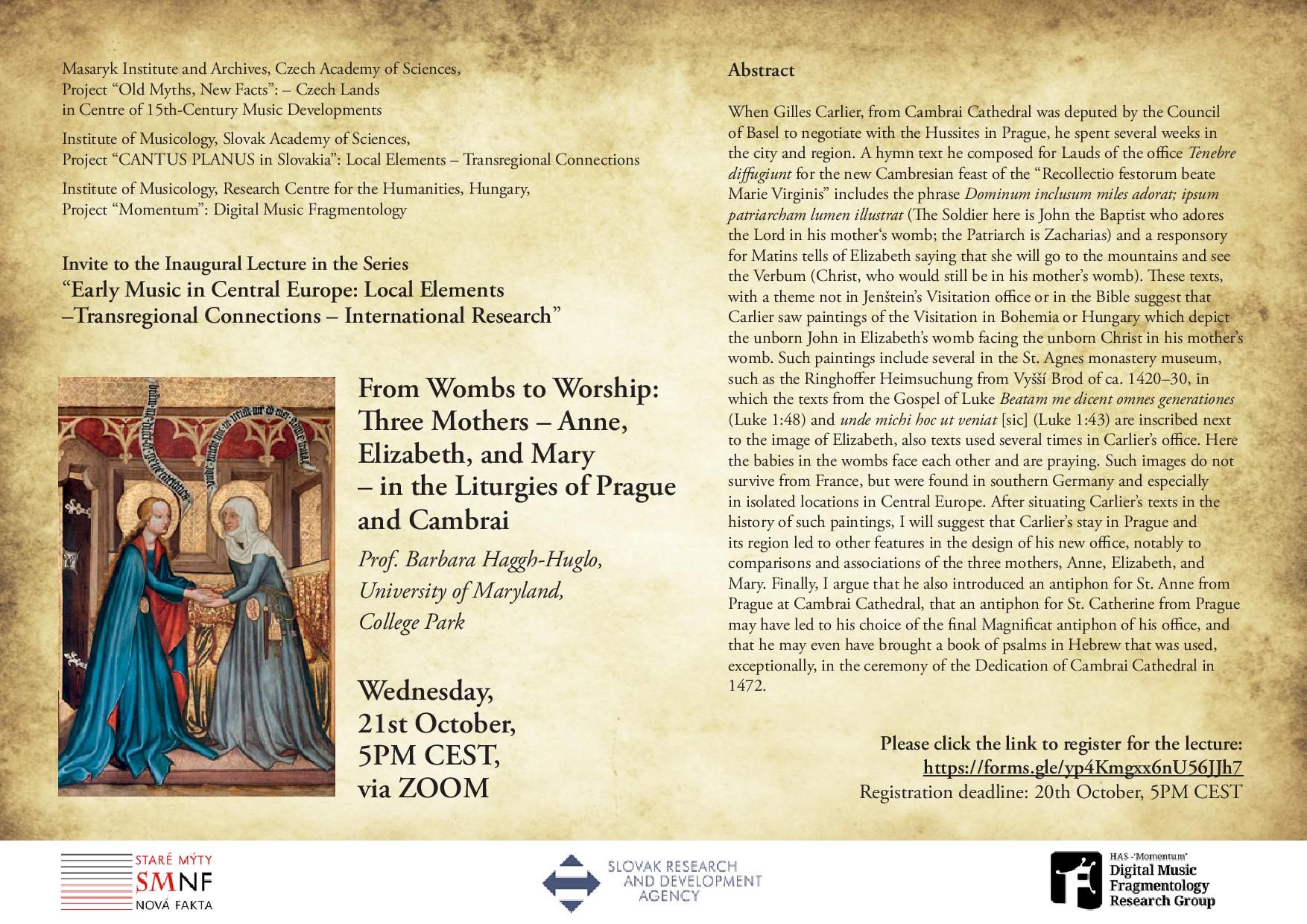The Masaryk Institute and Archives, Czech Academy of Sciences, Project “Old Myths, New Facts”: – Czech Lands in Centre of 15th-Century Music Developments and the Institute of Musicology, Slovak Academy of Sciences, Project “CANTUS PLANUS in Slovakia”: Local Elements – Transregional Connections and the Institute of Musicology, Research Centre for the Humanities, Hungary, Project “Momentum”: Digital Music Fragmentology invites you to the Inaugural Lecture in the Series Early Music in Central Europe: Local Elements –Transregional Connections – International Research
From Wombs to Worship: Three Mothers – Anne, Elizabeth, and Mary – in the Liturgies of Prague and Cambrai
Prof. Barbara Haggh-Huglo, University of Maryland, College Park.
Abstract
When Gilles Carlier, from Cambrai Cathedral was deputed by the Council of Basel to negotiate with the Hussites in Prague, he spent several weeks in the city and region. A hymn text he composed for Lauds of the office Tenebre diffugiunt for the new Cambresian feast of the “Recollectio festorum beate Marie Virginis” includes the phrase Dominum inclusum miles adorat; ipsum patriarcham lumen illustrat (The Soldier here is John the Baptist who adores the Lord in his mother‘s womb; the Patriarch is Zacharias) and a responsory for Matins tells of Elizabeth saying that she will go to the mountains and see the Verbum (Christ, who would still be in his mother’s womb). These texts, with a theme not in Jenštein’s Visitation office or in the Bible suggest that Carlier saw paintings of the Visitation in Bohemia or Hungary which depict the unborn John in Elizabeth’s womb facing the unborn Christ in his mother’s womb. Such paintings include several in the St. Agnes monastery museum, such as the Ringhoffer Heimsuchung from Vyšší Brod of ca. 1420–30, in which the texts from the Gospel of Luke Beatam me dicent omnes generationes (Luke 1:48) and unde michi hoc ut veniat [sic] (Luke 1:43) are inscribed next to the image of Elizabeth, also texts used several times in Carlier’s office. Here the babies in the wombs face each other and are praying. Such images do not survive from France, but were found in southern Germany and especially in isolated locations in Central Europe. After situating Carlier’s texts in the history of such paintings, I will suggest that Carlier’s stay in Prague and its region led to other features in the design of his new office, notably to comparisons and associations of the three mothers, Anne, Elizabeth, and Mary. Finally, I argue that he also introduced an antiphon for St. Anne from Prague at Cambrai Cathedral, that an antiphon for St. Catherine from Prague may have led to his choice of the final Magnificat antiphon of his office, and that he may even have brought a book of psalms in Hebrew that was used, exceptionally, in the ceremony of the Dedication of Cambrai Cathedral in Wednesday, 1472.
21st October, 5PM CEST, via ZOOM
Please click the link to register for the lecture:
https://forms.gle/yp4Kmgxx6nU56JJh7
Registration deadline: 20th October, 5PM CEST


